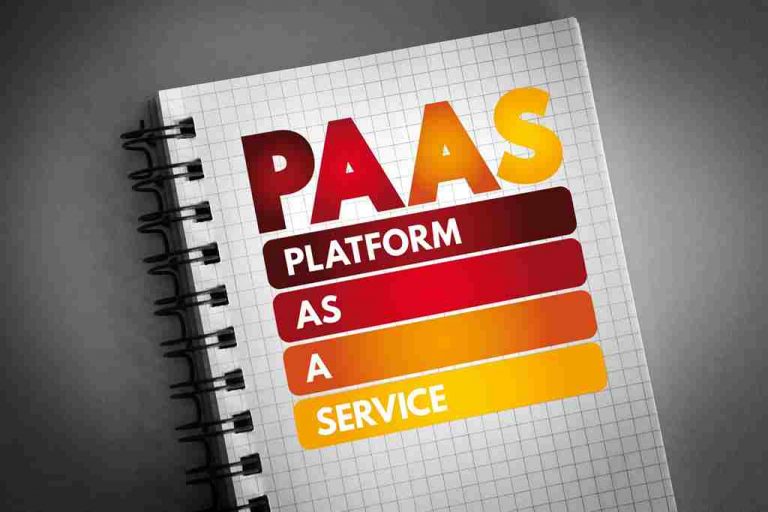15 jul What Are The Various Models Available For Cloud Deployment
Content
On March 1, 2011, IBM announced the IBM SmartCloud framework to support Smarter Planet. Among the various components of the Smarter Computing foundation, cloud computing is a critical part. In 2009, the government of France announced Project Andromède to create a ”sovereign cloud” or national cloud computing, with the government to spend €285 million. The initiative failed badly and Cloudwatt was shut down on 1 February 2020.
It is based on serverless computing, a mechanism that breaks workloads into small, event-driven resource components and runs the code without the need to deliberately create and manage VMs. This enables organizations to execute code-based tasks on demand when trigged; the components exist only for as long as the assigned task runs. As with all other cloud models, the provider handles the underlying cloud server maintenance.
Public Cloud vs. Private Cloud vs. Hybrid Cloud
With operating system–level virtualization essentially creating a scalable system of multiple independent computing devices, idle computing resources can be allocated and used more efficiently. Virtualization provides the agility required to speed up IT operations and reduces cost by increasing infrastructure utilization. Autonomic computing automates the process through which the user can provision resources on-demand. By minimizing user involvement, automation speeds up the process, reduces labor costs and reduces the possibility of human errors. According to International Data Corporation , global spending on cloud computing services has reached $706 billion and expected to reach $1.3 trillion by 2025. While Gartner estimated that global public cloud services end-user spending would reach $600 billion by 2023.
Test your cloud knowledge to see what gaps you might need to fill. A company should consider deploying their services or applications in the cloud for several reasons. First, it can help the company reduce overall costs because it does not need to purchase servers , and it saves on labor costs.
Utility Style Costing
This means that the company that runs a private cloud must have technical staff on hand to assist with any issues that come up during the operation of the private cloud. Access is strictly controlled so that only authorized users have access to the private cloud’s resources. A great thing about this type of cloud platform is that there are opportunities to integrate the cloud services into your organization’s own infrastructure. It is a one-to-one environment for single use, so there is no need to share your hardware with anyone else. The main difference between private and types of cloud deployment modelss is how you handle the hardware. It is also referred to as “internal cloud,” which refers to the ability to access systems and services within an organization or border.

Its configuration and deployment are quick and easy, making it an ideal choice for test environments. As the name indicates, the public cloud is available for the general public https://globalcloudteam.com/ who want to use computing resources such as software and hardware over the internet. It is a good choice for companies and organizations with low-security concerns.
Hybrid Cloud advantages
Cloud suppliers security and privacy agreements must be aligned to the demand requirements and requlations. Capabilities can be elastically provisioned and released, in some cases automatically, to scale rapidly outward and inward commensurate with demand. To the consumer, the capabilities available for provisioning often appear unlimited and can be appropriated in any quantity at any time. Capabilities are available over the network and accessed through standard mechanisms that promote use by heterogeneous thin or thick client platforms (e.g., mobile phones, tablets, laptops, and workstations).

Susnigdha Tripathy is a full-time writer and editor based in Singapore. Her work has also been published in Enterprise Networking Planet and ServerWatch. Since a third-party vendor handles infrastructure, users don’t have to spend on CAPEX, thus lowering their overall costs.
Deployment models
However, the two models have significant differences in how they operate and provide those services. When selecting a cloud service provider, organizations can opt for a large, general-use provider — such as AWS, Microsoft Azure or Google Cloud — or a smaller provider. General cloud providers offer broad availability and integration options and are desirable for multipurpose cloud needs.

Toggling between public and private can be hard to track, resulting in wasteful spending. Public cloud is the least secure, by nature, so it isn’t best for sensitive mission-critical IT workloads. In this model, users often face issues with lower bandwidth capacity with limited storage.
Javatpoint Services
Without this expertise, organizations are ill-equipped to handle the complexities of modern IT demands. IT professionals that hope to fill these roles can better prepare for career opportunities by fine-tuning their cloud skills in areas such as architecture/engineering, operations and coding. PaaS. A third-party provider delivers hardware and software tools — usually those needed for application development, including OSes — to its users as a service.
- Highlights the pros and cons of different computing architectures.
- It also offers tools and services to help customers manage cloud applications, such as data storage, security and various monitoring and reporting capabilities.
- A related option is a multi-cloud architecture, in which an enterprise uses more than one cloud.
- Cloud services are considered ”public” when they are delivered over the public Internet, and they may be offered as a paid subscription, or free of charge.
- The OpenStack project intended to help organizations offering cloud-computing services running on standard hardware.
- The cloud platform is implemented in a cloud-based secure environment that is protected by powerful firewalls and under the supervision of an organization’s IT department.







